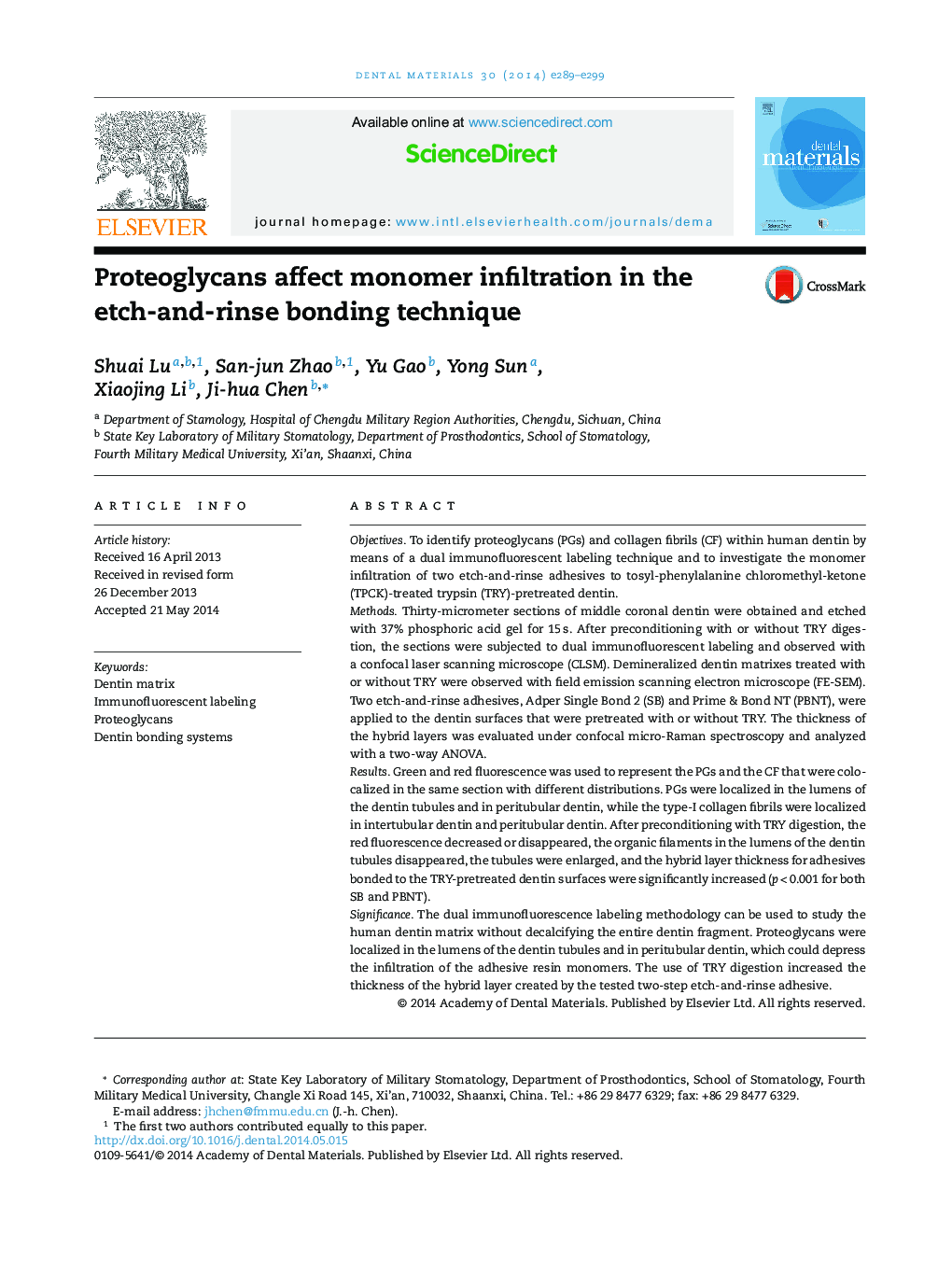| کد مقاله | کد نشریه | سال انتشار | مقاله انگلیسی | نسخه تمام متن |
|---|---|---|---|---|
| 1420848 | 986383 | 2014 | 11 صفحه PDF | دانلود رایگان |

ObjectivesTo identify proteoglycans (PGs) and collagen fibrils (CF) within human dentin by means of a dual immunofluorescent labeling technique and to investigate the monomer infiltration of two etch-and-rinse adhesives to tosyl-phenylalanine chloromethyl-ketone (TPCK)-treated trypsin (TRY)-pretreated dentin.MethodsThirty-micrometer sections of middle coronal dentin were obtained and etched with 37% phosphoric acid gel for 15 s. After preconditioning with or without TRY digestion, the sections were subjected to dual immunofluorescent labeling and observed with a confocal laser scanning microscope (CLSM). Demineralized dentin matrixes treated with or without TRY were observed with field emission scanning electron microscope (FE-SEM). Two etch-and-rinse adhesives, Adper Single Bond 2 (SB) and Prime & Bond NT (PBNT), were applied to the dentin surfaces that were pretreated with or without TRY. The thickness of the hybrid layers was evaluated under confocal micro-Raman spectroscopy and analyzed with a two-way ANOVA.ResultsGreen and red fluorescence was used to represent the PGs and the CF that were colocalized in the same section with different distributions. PGs were localized in the lumens of the dentin tubules and in peritubular dentin, while the type-I collagen fibrils were localized in intertubular dentin and peritubular dentin. After preconditioning with TRY digestion, the red fluorescence decreased or disappeared, the organic filaments in the lumens of the dentin tubules disappeared, the tubules were enlarged, and the hybrid layer thickness for adhesives bonded to the TRY-pretreated dentin surfaces were significantly increased (p < 0.001 for both SB and PBNT).SignificanceThe dual immunofluorescence labeling methodology can be used to study the human dentin matrix without decalcifying the entire dentin fragment. Proteoglycans were localized in the lumens of the dentin tubules and in peritubular dentin, which could depress the infiltration of the adhesive resin monomers. The use of TRY digestion increased the thickness of the hybrid layer created by the tested two-step etch-and-rinse adhesive.
Journal: Dental Materials - Volume 30, Issue 11, November 2014, Pages e289–e299